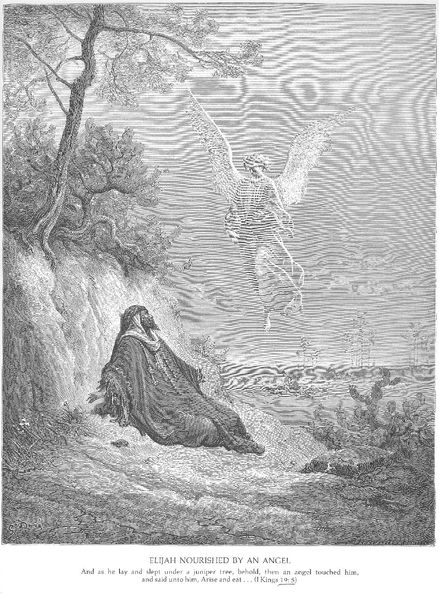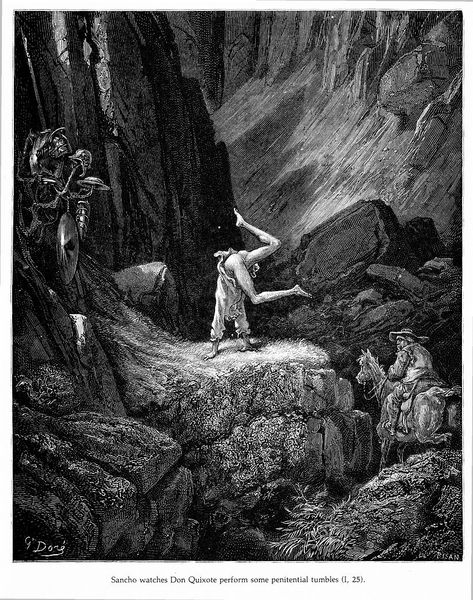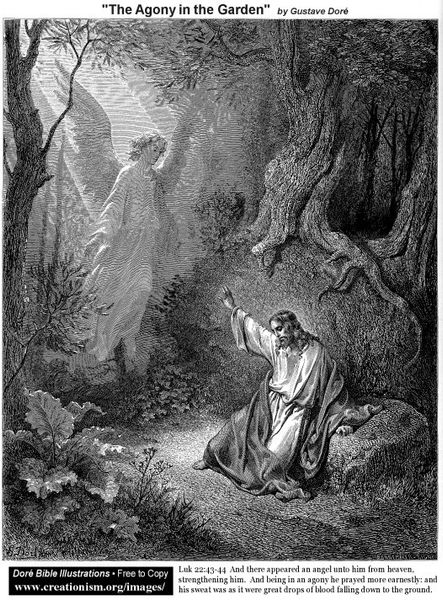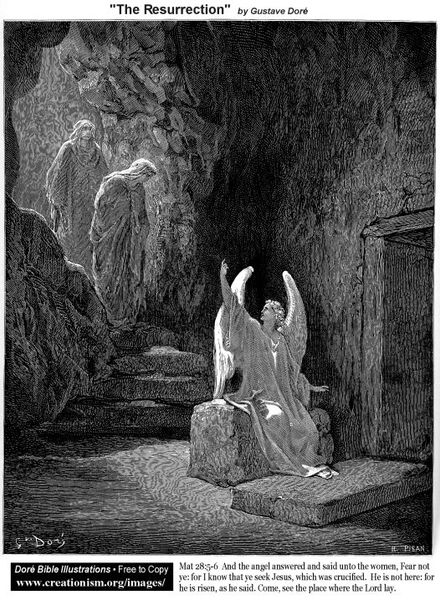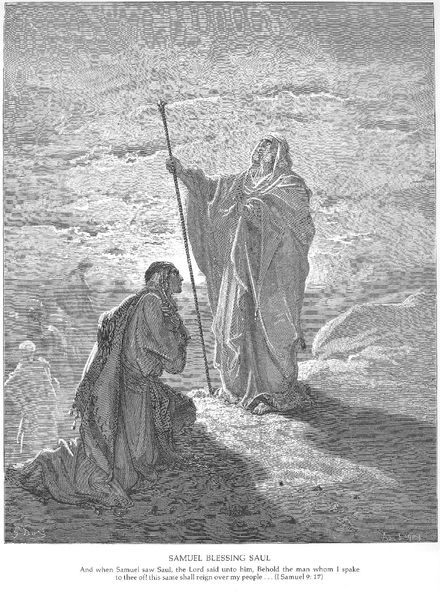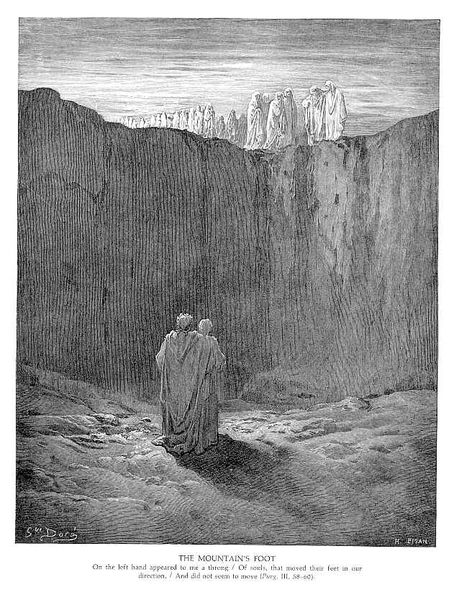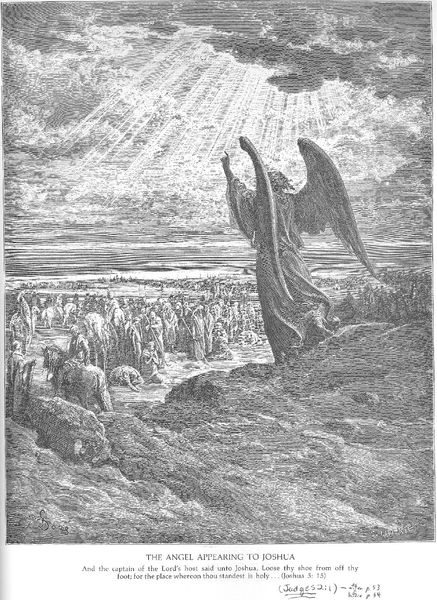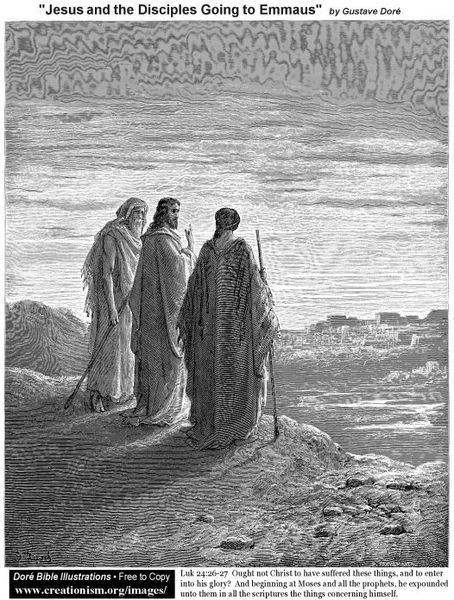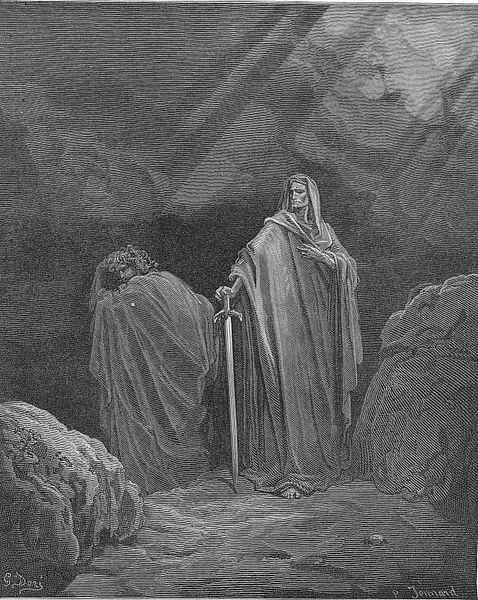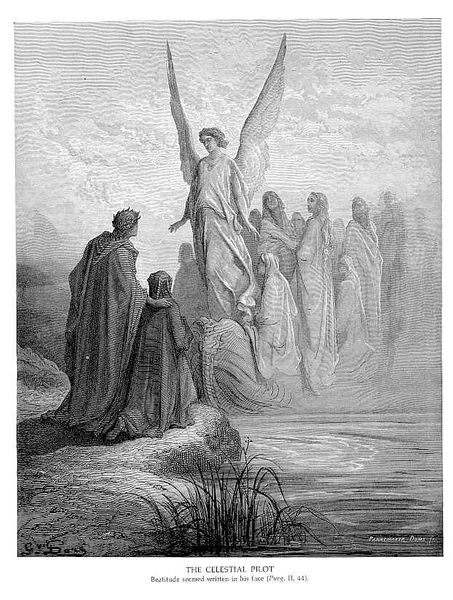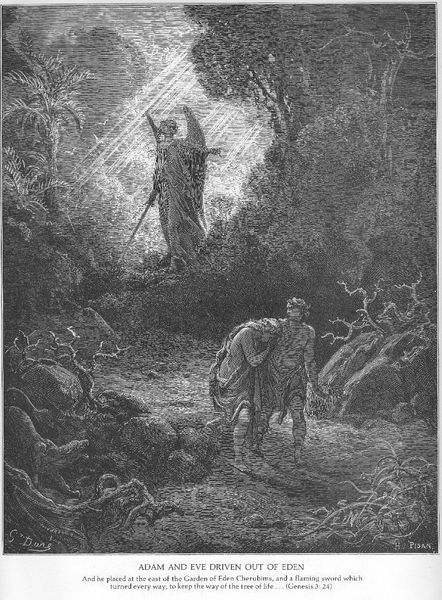
drawing, print, engraving
#
drawing
#
narrative-art
# print
#
landscape
#
figuration
#
jesus-christ
#
romanticism
#
chiaroscuro
#
christianity
#
history-painting
#
engraving
#
christ
Copyright: Public domain
This print, "The Temptation of Jesus," was made by Gustave Doré, sometime in the 19th century. It's a wood engraving, meaning the design was carved into a block of wood, then printed. Look closely, and you'll see the image is built up from a network of fine lines. The engraver would have used special tools to cut away the areas that would appear white, leaving the lines that would hold ink. This was painstaking work, requiring great skill. The character of the image, with its dramatic contrasts of light and shadow, and its textures, is entirely dependent on the patient labor of the engraver. Wood engraving was widely used for book illustration and print media in Doré's time. The print medium was a very effective means of dissemination and distribution of images throughout society. This speaks to the democratization of art through industrial processes. What might have been restricted to the walls of a church, was now available to be produced en masse. So while we might think of this image as simply illustrating a biblical story, it's also a product of a particular moment in the history of mass media.
Comments
No comments
Be the first to comment and join the conversation on the ultimate creative platform.
